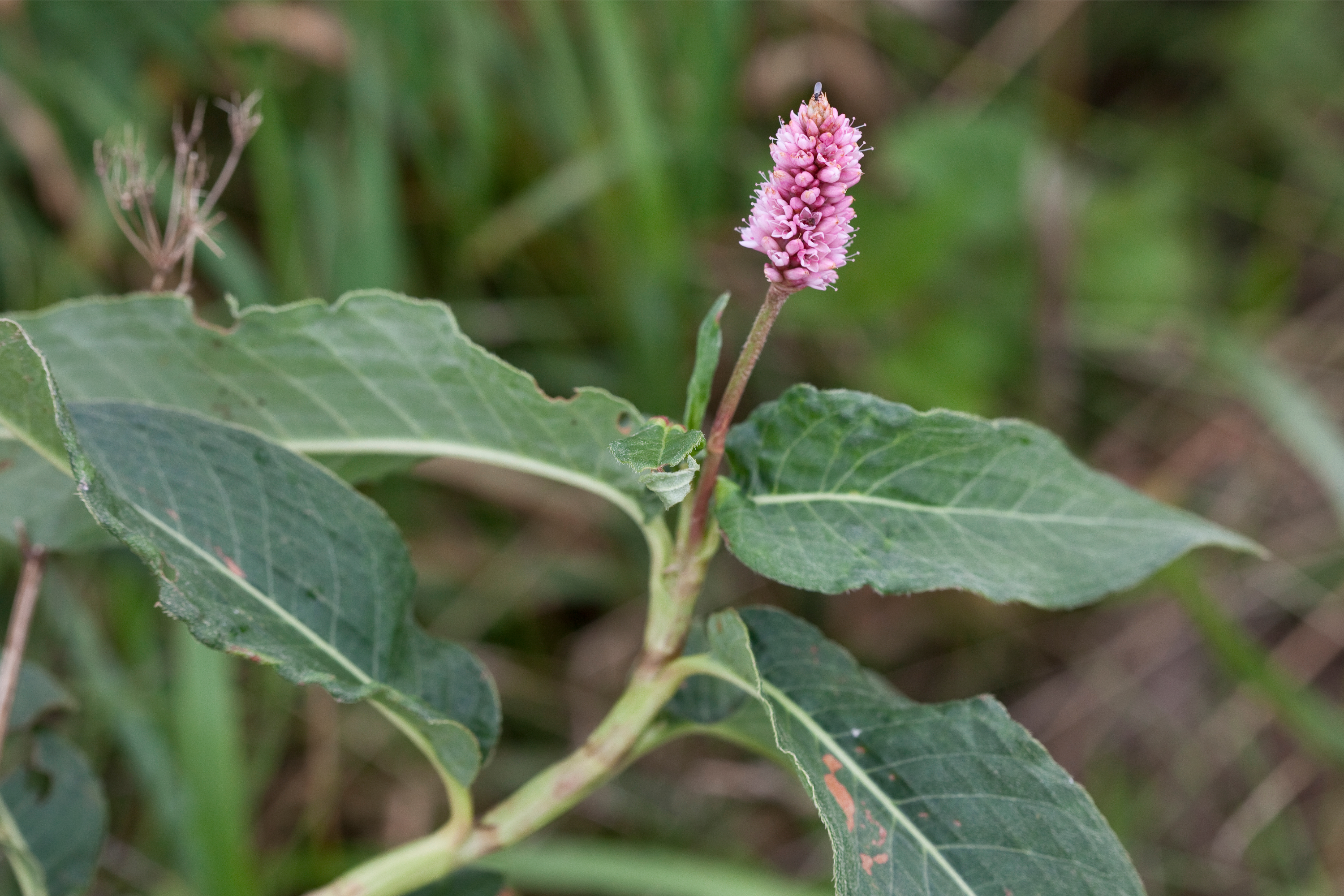Lady's thumb
(Persicaria maculosa)

Description
Persicaria maculosa (syn. Polygonum persicaria) is an annual plant in the buckwheat family, Polygonaceae. Common names include lady's thumb,spotted lady's thumb, Jesusplant, and redshank. It is widespread across Eurasia from Iceland south to Portugal and east to Japan. It is also present as an introduced and invasive species in North America, where it was first noted in the Great Lakes region in 1843 and has now spread through most of the continent. Persicaria maculosa is an annual herb up to 1 metre (3 ft 3 in) tall, with an erect, rather floppy stem with swollen joints. The leaves are alternate and almost stalkless. The leaf blades often have a brown or black spot in the centre and are narrowly ovate and have entire margins. Each leaf base has stipules which are fused into a stem-enclosing sheath that is loose and fringed with long hairs at the upper end. The inflorescence is a dense spike. The perianth of each tiny pink flower consists of four or five lobes, fused near the base. There are six stamens, two fused carpels and two styles. The fruit is a shiny black, three-edged achene. This plant flowers from July to September in the temperate Northern Hemisphere. The species was first described, as Polygonum persicaria, by Carl Linnaeus in 1753. It was first successfully transferred to the genus Persicaria by Samuel Frederick Gray in 1821, under the name Persicaria maculosa. The name "Persicaria persicaria" cannot be used because tautonyms – binomial names that use the same word for both the genus and the species epithet – are prohibited by the International Code of Nomenclature for algae, fungi, and plants, and a replacement name (nomen novum) must be used. For this reason the transfer of the species to Persicaria by John Kunkel Small in 1903, which used the tautonym, is invalid. Persicaria maculosa is native to Europe and Asia, where it can be mistaken for Polygonum minus. The latter has narrower leaves, usually less than 1 cm wide. It has been introduced to North America and is naturalised throughout the mainland continent,growing along roadsides, riverbanks, and on fallow ground. In the United States, it is very similar to Pennsylvania smartweed, but redshank has a fringe of hairs at the top of the ochrea, something which Pennsylvania smartweed lacks. The species has also been found in New Zealand and Australia.
Taxonomic tree:







